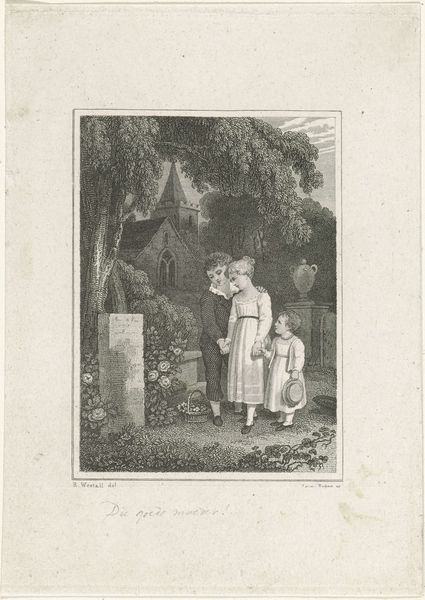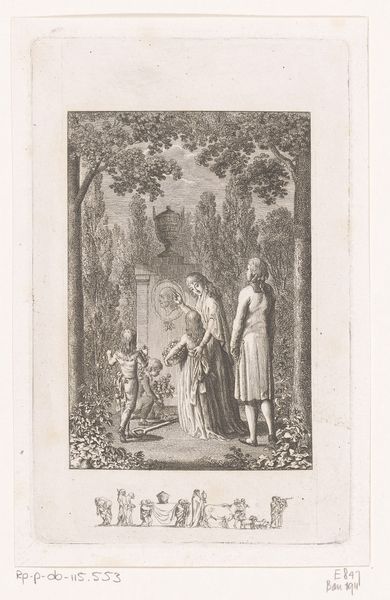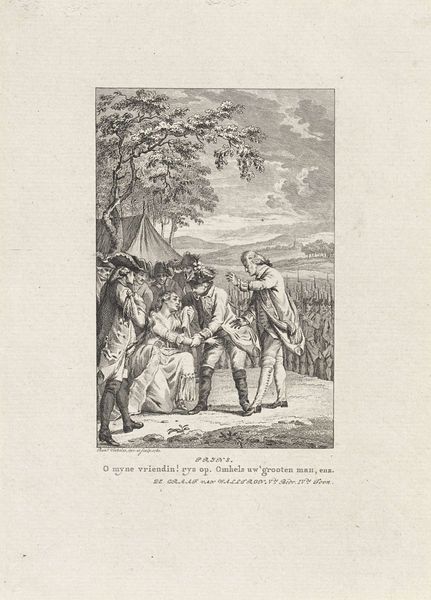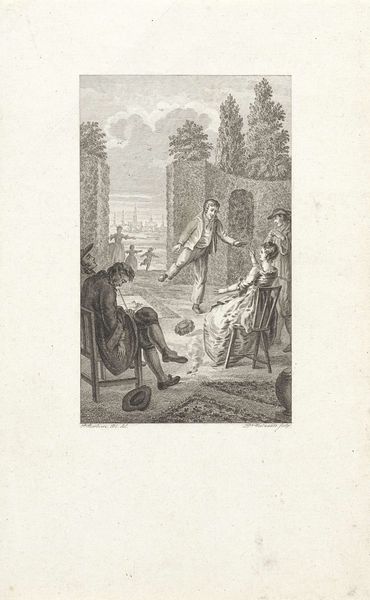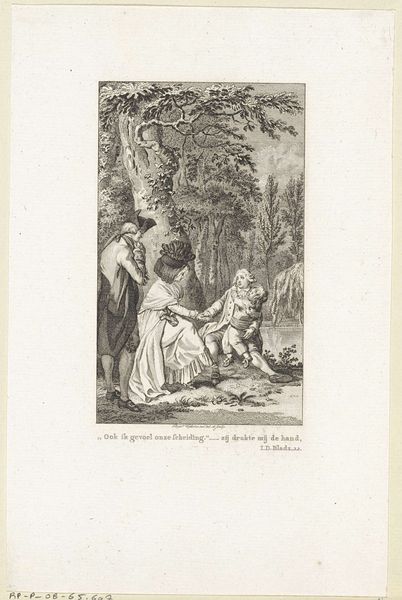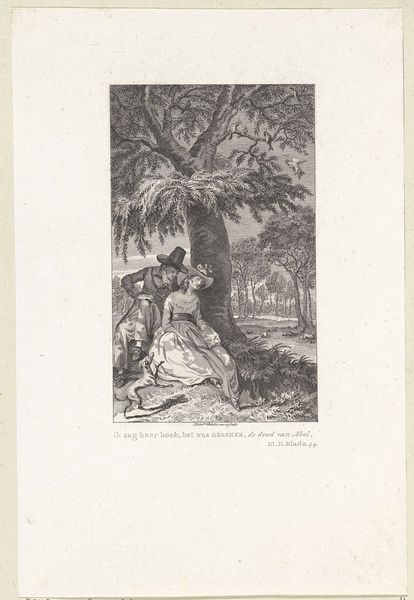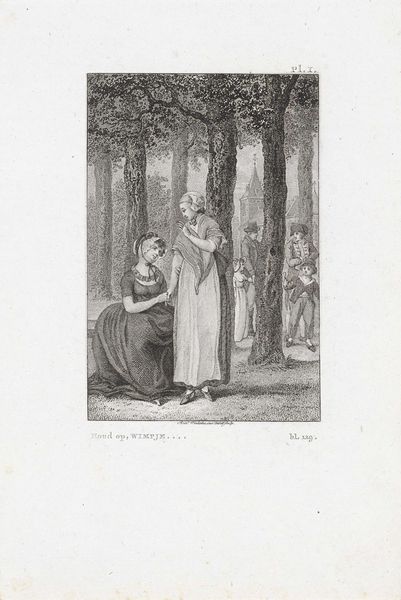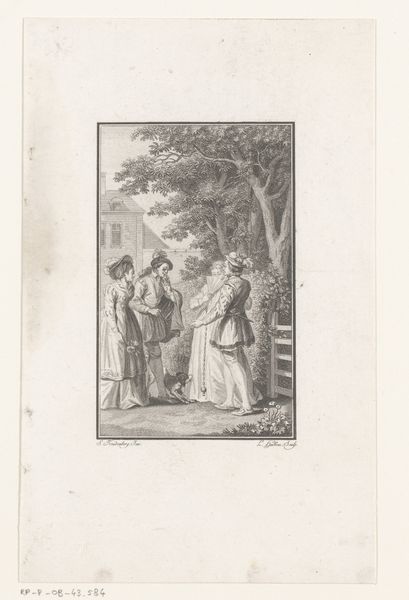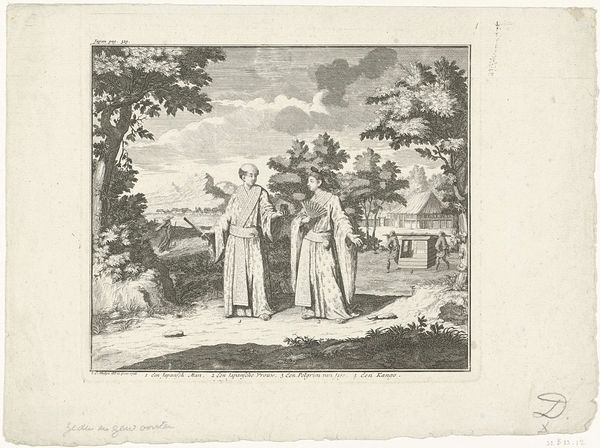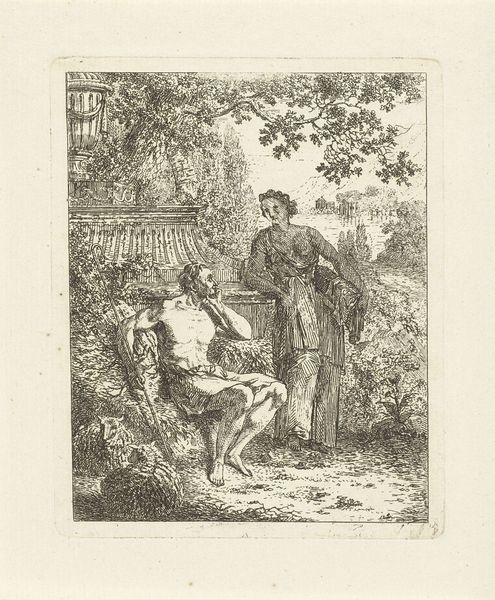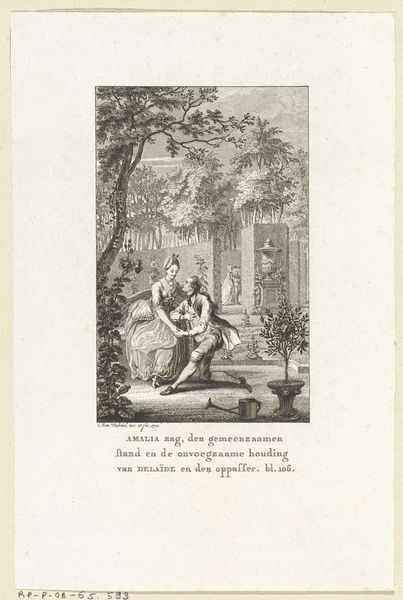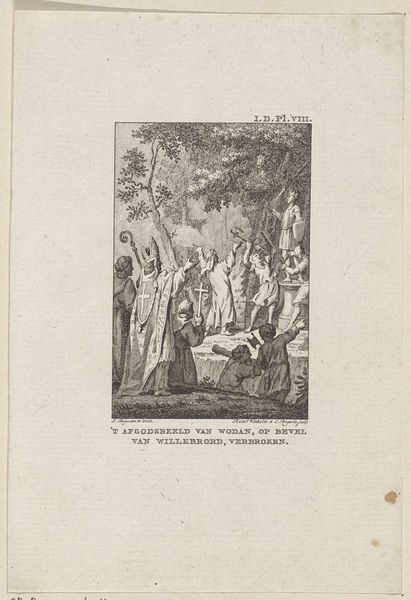
print, engraving
#
narrative-art
# print
#
old engraving style
#
landscape
#
group-portraits
#
romanticism
#
genre-painting
#
engraving
Dimensions: width 186 mm, height 121 mm
Copyright: Rijks Museum: Open Domain
Curator: Here we have "Three Children at Their Mother’s Grave," an engraving dating back to 1830. The piece currently resides at the Rijksmuseum. Editor: It’s stark. The lack of color amplifies the somber mood, though the engraver renders great contrast and luminosity throughout. There is an acute emphasis on tonality in this small framed engraving. Curator: Indeed, notice how the tonal shifts are achieved. If we observe closely the parallel lines, cross-hatching, and stippling create depth and shadows. There's an interplay between light and darkness that adds dimension to the image of children surrounding a grave, punctuated by an atmospheric, albeit romanticized, landscape and a looming church steeple. Editor: As I think about the materiality, I find it fascinating that something so fragile—a thin piece of paper—could carry such a heavy subject. The labor involved in the printing process… creating a matrix where this could be transferred onto paper. Were such prints mass produced? This must have facilitated broader access to art. Curator: Prints were indeed integral in disseminating imagery. Also, consider the symbolic context of the piece, aligning with Romantic ideals—emphasizing emotion, spirituality, and an appreciation of nature. It speaks of grief and familial bonds. Editor: Right. I find myself wondering about the human element and their role in society during that time… Perhaps it was comforting, or cathartic even, to see bereavement expressed and replicated through such accessible means. Curator: An important factor. To step back and appreciate the craftsmanship, it's important to recognize how Van der Meulen has adeptly captured emotion within a defined structural frame. Editor: An exploration into what art could become! Thinking about the way production changed access to visual art, or what it meant to make an object and how it then spread outwards and was circulated as both medium and message. Curator: Yes, and within the dialogue between form and the tangible. An exploration into the narrative and aesthetic elements that make this piece unforgettable. Editor: Precisely. Seeing that interchange solidifies its lasting power and value.
Comments
No comments
Be the first to comment and join the conversation on the ultimate creative platform.
